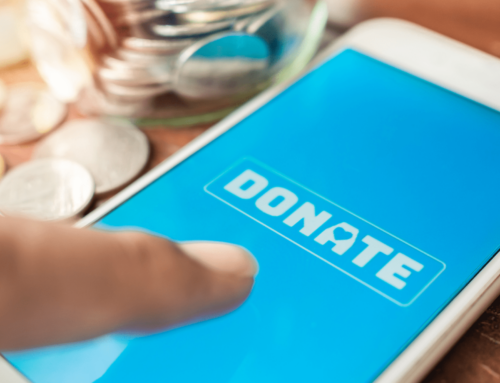This guest post was written by Grant Cobb, of GivingMail.
No matter the size of your nonprofit organization, fundraising is vital to your success. Unlike for-profit ventures, you rely significantly on your ability to garner support from your community and the public at large, so the stakes for fundraising are high.
At GivingMail, we specialize in the use of direct mail appeals in nonprofits’ fundraising campaigns, so we’re no stranger to fundraising. We’ve helped nonprofits big and small boost their fundraising campaigns and effectively target their donors.
Over the years, we’ve learned what works and what doesn’t when it comes to nonprofit fundraising—we even have complete guides like this one on the subject! Here, we’ve compiled 4 steps to take to ensure your next campaign is a smash hit. We hope you’ll take these into consideration:
- Create a powerful case for support.
- Choose the best channel for giving.
- Outsource your fundraising operations.
- Follow up and thank your donors.
Keep reading to learn more about each of these strategies. Let’s get started!
1. Create a powerful case for support.
It’s helpful to think of every fundraising ask as an exercise in persuasion. After all, you are trying to influence your audience (potential donors) to take a desired action. The best, most persuasive writing uses a combination of logic and emotional appeals. You can improve your fundraising appeals by incorporating a bit of both.
Appeal to donors’ logical sides in your fundraising efforts by using data and other objective information to explain the problem your organization aims to solve and how you can diminish that problem. Your audience needs to believe in both the reality of the problem and the ability of your organization to fix it. Otherwise, they’re likely to get behind another, more urgent issue, or find another nonprofit to support.
Here’s an example from Wild Orca of how you can use evidence to convince your audience of the existence of a problem:
Endangered Southern Resident killer whales require approximately 547,500 salmon to survive every year. NOAA & the Pacific Salmon Commission have allocated 0 salmon to killer whales, sealing their fate toward extinction.
Wild Orca follows up this numerical description of the problem with a more emotional statement to emphasize the urgency of the issue:
Southern Resident killer whales are literally starving to death.
Each form of persuasion—both logical and emotional—is convincing in its own way. Using just one or the other likely won’t lead to the strongest fundraising campaign possible. Too much logic and potential donors won’t feel any reason to donate; too much emotion and not enough logic, and potential donors may not trust or understand the problem.
Try to weave a combination of objective information and emotional content throughout your fundraising materials. Regardless of the exact balance you settle on, make sure that you:
- Have a hook to draw the audience’s attention.
- Tell a story to arouse empathy.
- Communicate your mission to explain the need.
- Use details to make your cause more vivid.
So what specific elements of persuasion can you include in your fundraising materials? These are great to start with:
- Pictures, videos, and other interactive elements tend to humanize your cause, make content more engaging, and increase emotional appeal. Definitely include some multimedia elements on your website and in your marketing efforts.
- Case studies provide evidence for your nonprofit’s impact and/or the overarching issue while maintaining specificity.
- Statistics present information in a flat, scientific way, leaving little room for confusion or disagreement. Statistics are useful when you are trying to explain the gravity of the problem your organization works to fix, or when you are establishing trust by describing your track record as an organization (i.e. we’ve provided homes to 67% of Gainesville’s impoverished population).
It’s essential to make sure that on every piece of material you produce—digital or otherwise—your nonprofit’s mission is obvious. If potential donors can’t tell what it is you do or aim to do, it’s not likely they’ll feel moved to donate.
2. Choose the best channel for giving.
These days, there are many different ways to give to charitable organizations, and as a nonprofit, there are just as many ways to promote your campaigns. Some of the most common donation and promotion channels are:
- Direct mail
- Online donation page
- Social media
- Text-to-give
With so many options, it can be difficult to know how and where to market your campaign.
One of your main considerations when deciding which channels to pursue should be evidence from your nonprofit’s past campaigns. You can access this information with your nonprofit’s donor database software, where you’ll find stats like fundraising ROI (return on investment), CPDR (cost-per-dollar-raised), and gifts secured. Examining your previous successes and setbacks is the best way to tell what will work for your organization going forward.
For example, if your past few campaigns were almost entirely driven by email marketing, and important metrics like click-through rates and email open rates were low, consider adding a different channel like direct mail or Facebook fundraising and/or tweaking your previous campaign’s email strategy.
Other information you’ll want to guide your decision includes your current donors, their demographic data, and their interaction history. You’ll want to know things like:
- Age, location, and gender.
- Giving history.
- Preferred communication methods.
- Past giving channels.
Once you know this information about your donors, you can tailor your outreach accordingly. If, for example, you know your audience skews young, you may want to focus on social media marketing, like on Instagram and Facebook.
Still, no matter your donors’ demographics, it’s wise to incorporate multiple channels into your campaigns. According to Double the Donation’s statistics, 19% of older donors prefer to give via direct mail, while millennials prefer to give online. Combining channels ensures you get your message out to a wider audience and maximize opportunities for success.
3. Outsource your fundraising operations.
Depending on which channels you choose for your specific operation, it may be wise for you to outsource some of your marketing activities to a specialized fundraising company. This is particularly true if you know you want to focus on a specific channel in your fundraising strategy, as many fundraising companies specialize in one area or another, like email marketing, direct mail marketing, and Facebook fundraising.
Companies that focus on designing and implementing marketing strategies for your fundraising campaigns can:
- Help you determine the best way to approach your donors.
- Work with you on developing compelling copy.
- Recommend and implement the ideal pace of touch points.
- Take care of donor follow-up.
- Leverage years of experience in the fundraising space.
Outsourcing the marketing work to a company might be the breath of fresh air that you need to get back to the meaningful work of building relationships with donors.
4. Follow up and thank your donors.
It’s well-known in the nonprofit world that new donors are more expensive to acquire than previous donors. Once you have someone in your donor network, you don’t want to let them go!
So, what do you do to get those donor retention rates up?
The most essential step is following up with your donors after they engage with your organization. Following up takes a variety of different forms. Let’s look at a few:
- Donation confirmation receipts make sure your donors have a digital record to return to if they want to access your website again or reference their donation information for tax purposes. Be sure to include a thank-you in this contact and provide links to your website, a way to subscribe to your newsletter, and more.
- Post-event surveys tell your supporters that you noticed they were at your event and show them you value their feedback.
- Post-volunteering surveys allow you to engage more deeply with your volunteers and give you access to valuable information about the volunteer experience.
- Newsletters allow you to keep in touch with your base of supporters without constantly asking for donations. Instead, you can offer ways to get involved and share important updates.
In addition to following up, you need to make sure to thank your donors appropriately. After all, they are literally the reason why your organization is able to work toward its mission. The most important things to keep in mind when thanking your donors are to be genuine and to be personal. Generic “Dear supporter” letters aren’t likely to make much of an impact.
Instead, be sure to use your donors’ names in your letters, and better yet, reference details about them, so they know your message is personal. You can use your nonprofit’s donor database software to segment recipients based on common characteristics, making personalization of thank-you letters easier. Thank-you letter templates can provide some inspiration for your thank-yous if you’re feeling stuck!
Other than letters, consider thanking your donors with gifts, exclusive events, or other perks. Whatever you do, just make sure that the thank-you is proportionate to the donation—a T-shirt for one of your major donors probably isn’t sufficient.
Your donors are more likely to stick around if they feel like their contribution matters, so show them that you see and appreciate them.
Of course, holding on to your donors year after year vastly improves the long-term outlook for your nonprofit, meaning you’ll have more resources over time to accomplish your mission. And that is unquestionably a good thing!
In your next fundraising venture, we hope you’ll take some advice from the steps we’ve listed here. It’s essential that you’re on the right track from the beginning of your campaign to the end, so be sure to start strategizing about messaging and channels early, and keep up the momentum all the way to the thank-you and follow-up stages.
If you follow our top tips you’ll be well on your way to creating an awesome fundraising campaign. Good luck!
By Grant Cobb
Grant Cobb is a fundraising specialist with over 6 years of experience in the nonprofit space. Currently the head of marketing and analytics at GivingMail, he is a huge proponent of data-driven decision-making and the push to bring high-level analytics and fundraising to all.





